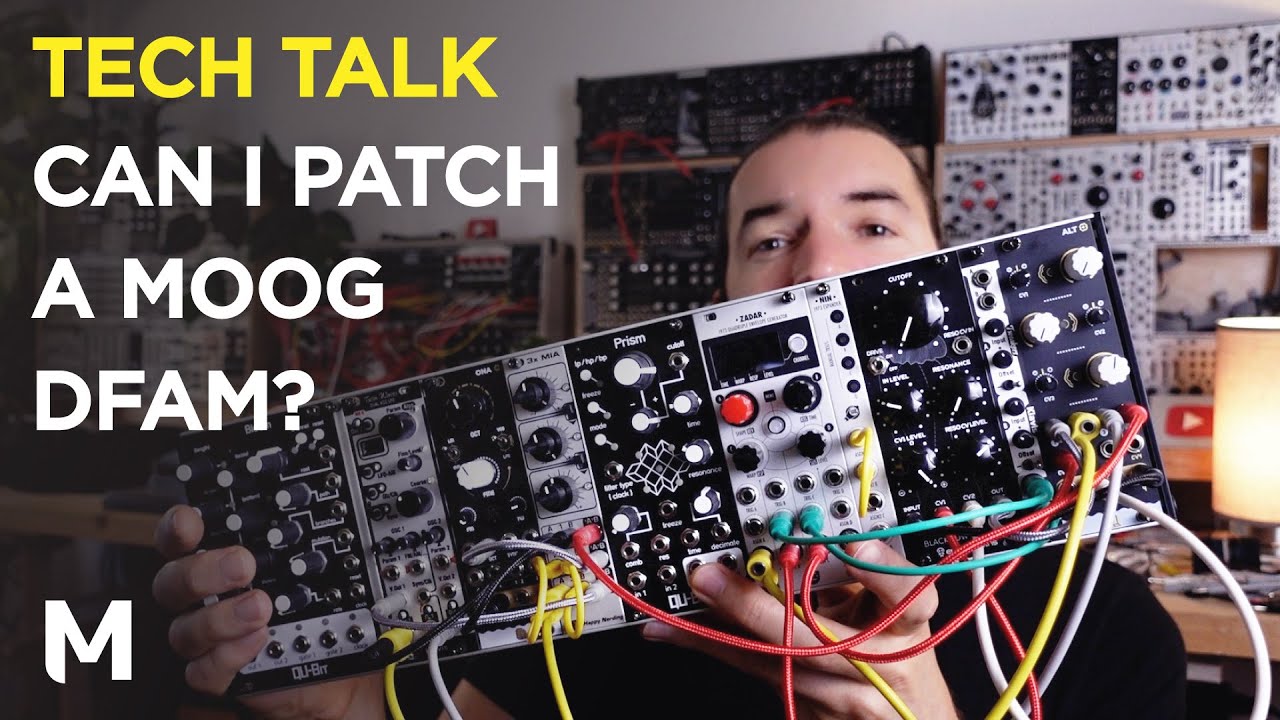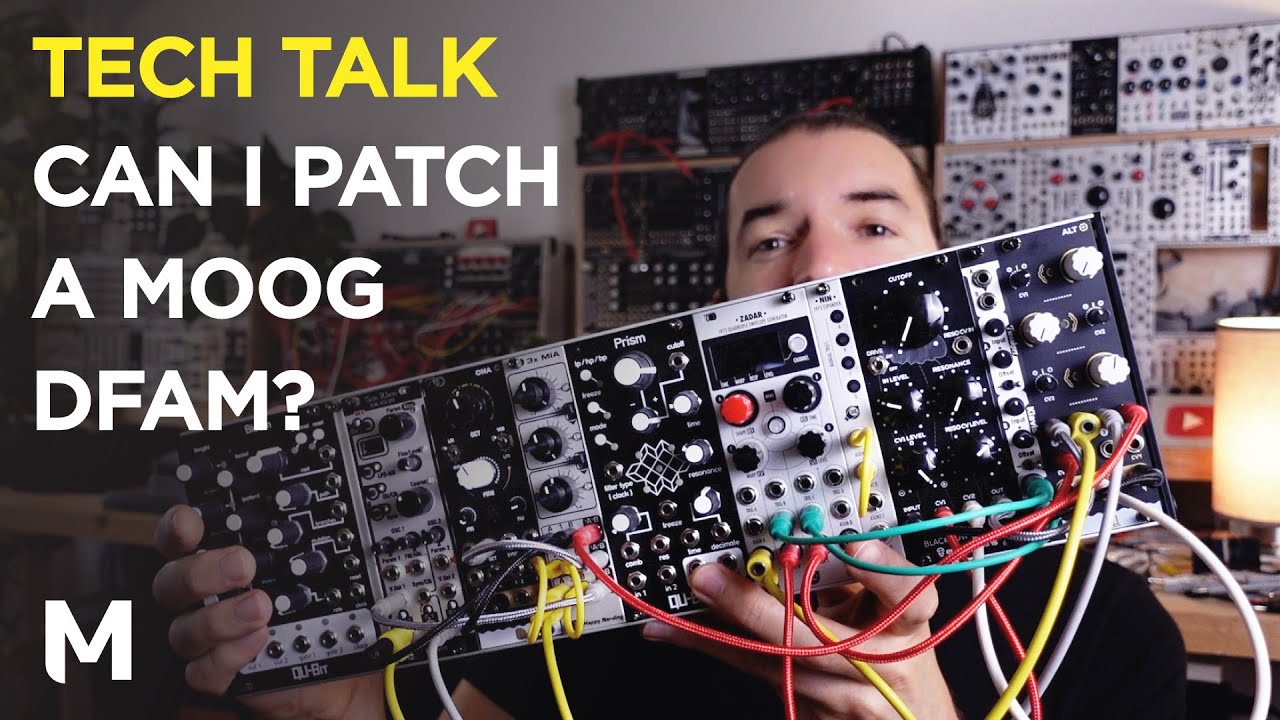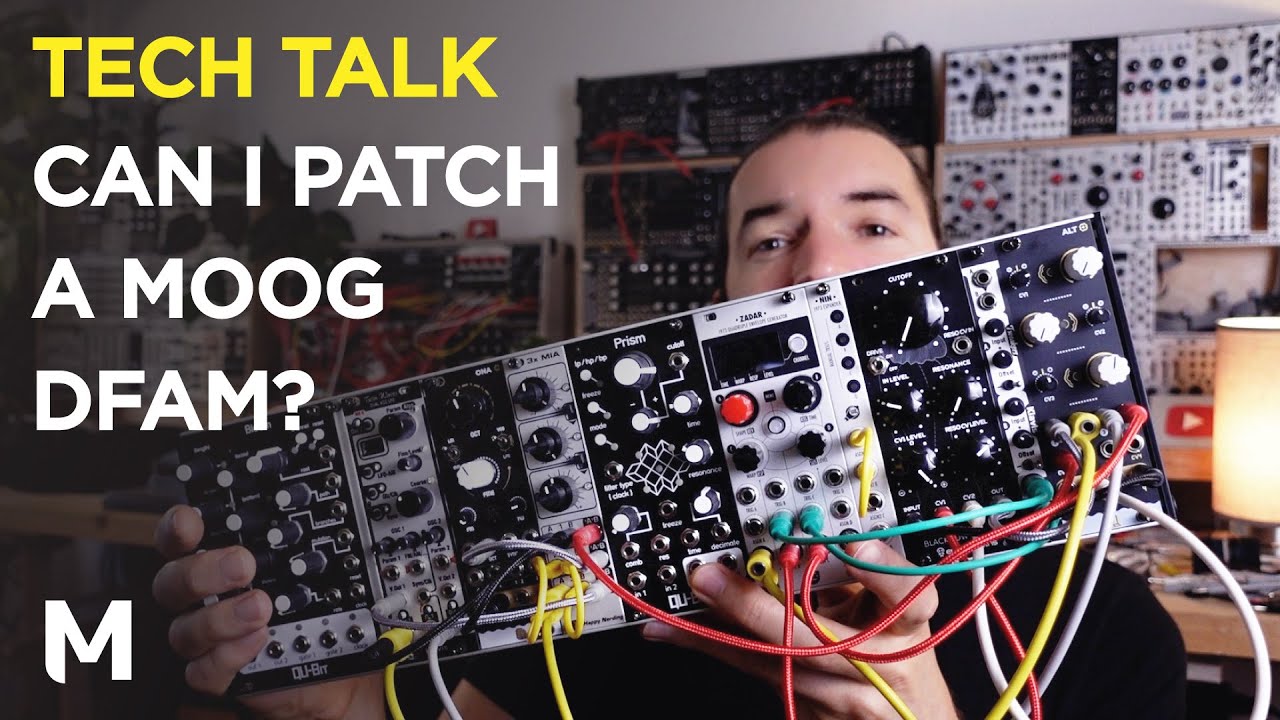Get ready to rumble with MonotrailTechTalk as he takes on the Moog DFAM using his compact eurorack setup. In this beat-driven adventure, he showcases how to fight Gear Acquisition Syndrome with creative patching, proving you don’t need all the fancy toys to make the room shake. Who needs a Moog when you’ve got ingenuity?

25. June 2025
RILEY
MonotrailTechTalk and the DFAM Battle: A Groove Odyssey
The Gear Lust Battle Begins
MonotrailTechTalk starts off by admitting the allure of the Moog DFAM, a piece that has captivated his imagination. Nonetheless, he champions the idea that you don’t always need to surrender to Gear Acquisition Syndrome (GAS) when you can use what you already have. By dissecting the sonic magic of the DFAM, he plans to recreate an equivalent audio journey using his modest eurorack setup. It’s all about evoking the spirit of the DFAM without owning it. This approach not only tames the incessant desire to own every shiny new gadget but encourages mastering the tools already at hand.

"I find one of the best ways to fight gas is to learn from the gear that inspires you."
Crafting With Classic Components
The journey into mimicking the Moog DFAM begins with laying down an old-school setup. At the heart of this makeshift sonic machine are two oscillators paired with a trusty noise source. These elements are routed into a mixer, followed by a filter and a Voltage Controlled Amplifier (VCA). Although Monotrail is sticking to the low-pass filter to keep things simple, he’s not shy about missing the high-pass option sitting on the DFAM. With accessible knobs and mixers, he improvises to recreate the sequenced modulations, painting each pitch with elegance and precision. His choice of the Korg SQ-1 as a sequencer further cements his resourcefulness. It’s about leveraging the ordinary to create the extraordinary, a true testament to the streetwise engineer’s prowess.
Elevating with Envelopes and Velocity
The magic touch to this patch lies in the envelope setup. The DFAM’s envelope sequence might be deceptive, but Monotrail unveils its genius by showing how much it adds to the sound’s dynamics. There are three envelopes at play, modulating everything from the VCA to filter frequencies and pitch. He skillfully routes these through mixers, letting each oscillator embrace its own unique flavor. Attenuators come into the picture, tweaking the pitch modulation to achieve inverse effects vividly. Moreover, what’s captivating is the velocity sequencer’s role, not just dictating volume but also controlling modulation depths. It’s a sound design ballet that Monotrail masters with finesse, indicating how such techniques can deliver performance subtleties that resonate with the street performance ethos.
Unlocking Extra Features and CVs

"Overall I feel this exercise really shows how clever and effective the DFAM is designed."
Diving deeper into the intricacies of the DFAM’s emulation, Monotrail brings forth the hidden capabilities of the setup. Modulating the noise level with CV inputs transforms ordinary signals into gritty marvels. By syncing oscillator frequencies, he introduces tonal variations that would suggest a new layer of sophistication to the sound. While using VCA for FM possibilities, he recreates modulation opportunities that mirror the DFAM’s unique controls, seamlessly connecting velocity sequences to usher in unexpected tonal surprises. Here, everything stands as a testament to the creative flexibility inherent in modular setups, where each patch point is a portal to a possible sonic universe. It’s the kind of setup that would have any seasoned beatmaker nodding along, recognizing the familiar but always intoxicating dance of cables and sounds.
Beyond the Beaten Path
Taking things a step further, Monotrail showcases how even simple tweaks can elevate the entire sonic landscape. Introducing an unsynchronized LFO or adding filter resonance modulation opens a vistas of dynamics and depth that were once unreachable. The setup’s modular nature allows for unique combinations, encouraging experimentation beyond scripted sequences. By using the velocity sequence to control modulation depths, Monotrail unlocks the potential for varied rhythm and texture shifts. It’s a reminder that while the Moog DFAM is a stellar piece of gear, inspired tinkering with your own setup could lead to equally exhilarating results. This isn’t just a lesson in gear economics but an ode to the limitless possibilities that come with understanding and improvising.

"That's exactly what makes the DFAM tempting and fun."
Conclusion and Creative Sparks
As the video wraps up, Monotrail reaffirms the cleverness of the DFAM’s design and the joy in seeking similar delights with your own gear. While the DFAM is celebrated for its hands-on design and piled high with sweet spots, Monotrail’s eurorack provides its own kind of thrill. The process unlocks creative sparks only found when devising patches that mimic, yet hold their distinct flair. The beauty of this journey lies in recognizing the strength of what’s available, pushing boundaries, and discovering unexpected rhythms along the way. Whether you own a DFAM or are mastering the art of making more with less, Monotrail leaves you with an invitation to explore, adapt, and let the beats roll naturally in your own unique way.
Latest articles
Watch on YouTube:
https://www.youtube.com/MonotrailTechTalk
Sponsored links:
If you purchase via these links, we may earn a small commission – at no extra cost to you.
🔗 Check price on Amazon
🔗 Check price on Amazon